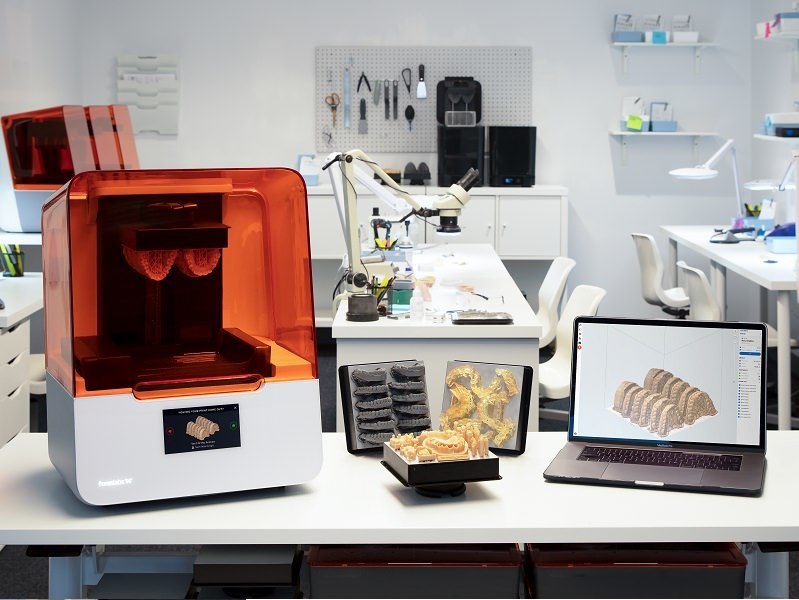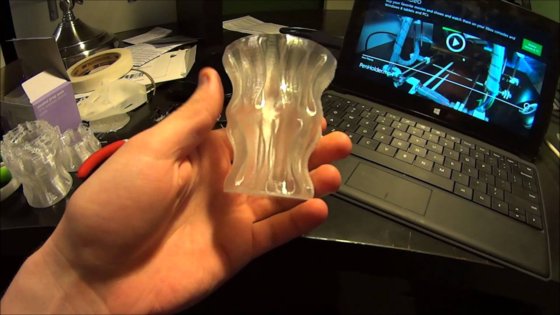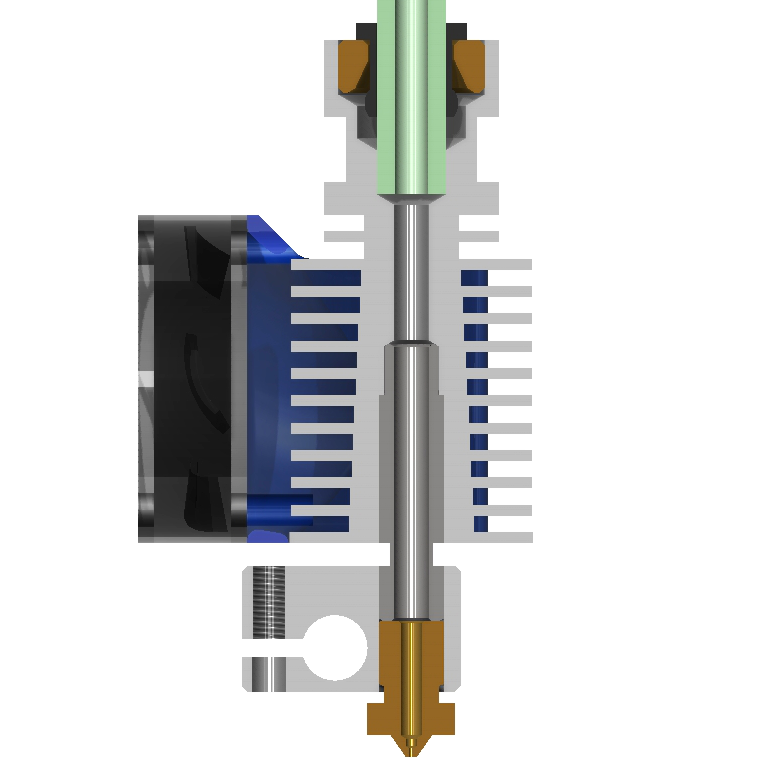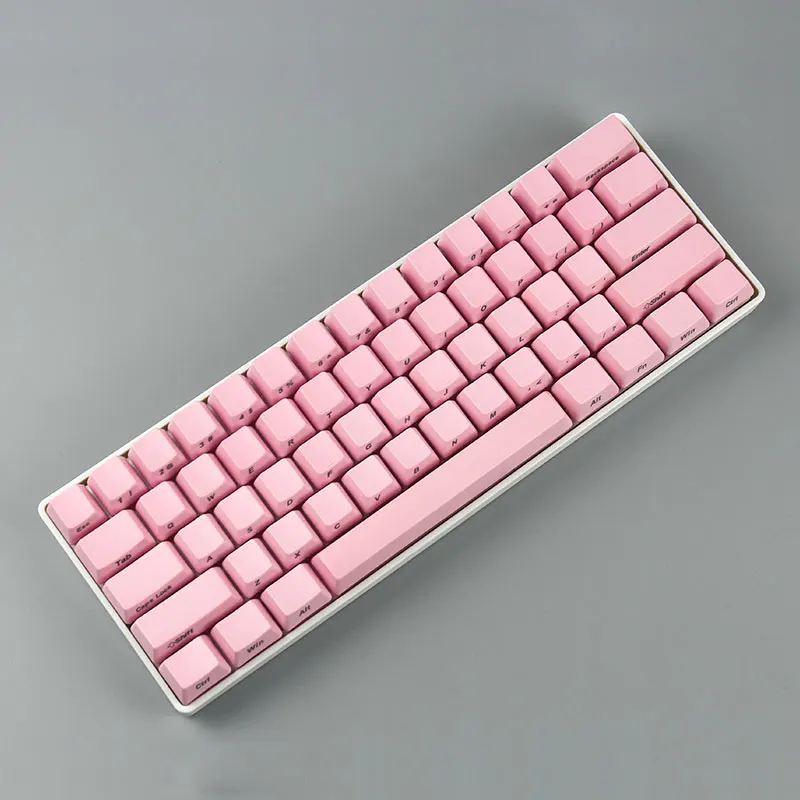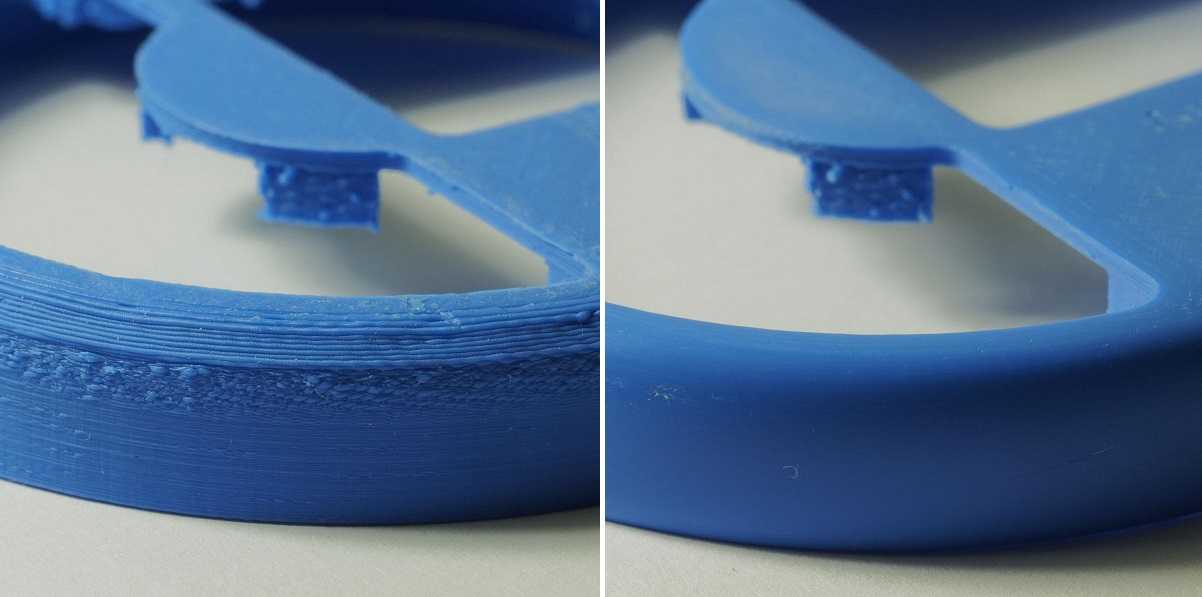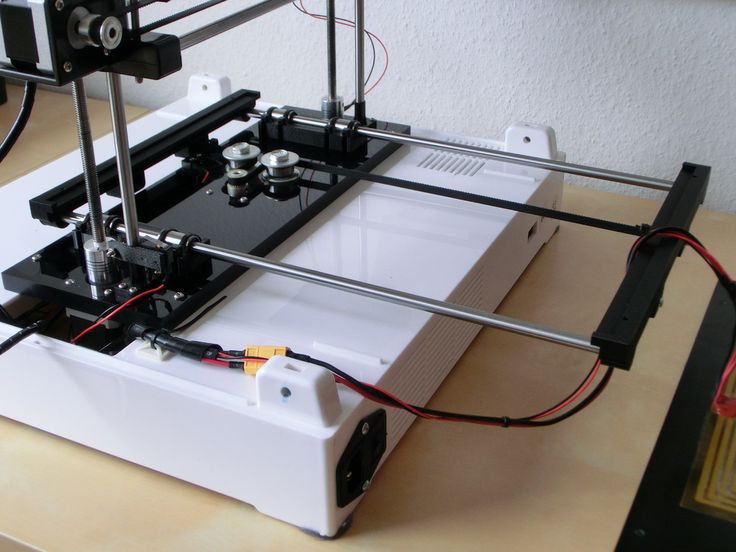First 3d printer project
The 25 great beginner projects for at home 3D printers
When you’ve just got your first 3D printer at home, you’ll be excited to get started – the possibilities really are endless and you can print absolutely anything! You could wait to make your first print until you’ve mastered whichever 3D modelling software you’re going to work with, and create a bespoke design; but with such possibilities, we don’t know many people who would want to wait that long to get started!
If you’ve never done any 3D modelling on your PC before, then no matter how excited you are, you’ll probably feel a bit daunted. Luckily, you don’t have to be, since there are some great projects that are already out there and available for you to download, both for free and to pay to download. Heading for any of the biggest 3D printing communities will lead you to some fantastic projects to have a go at.
There are so many great projects that deciding which one to do can be a time-consuming mission all by itself! That’s why we thought we’d narrow down some of the best projects out there. With so many projects available, we’re sure we have missed some other great ones – so even if you don’t find the print you want to make, we’re sure our finds in this post will inspire you.
Where can I find 3D printer files for beginners?
As we mentioned in our 3D printing basics post, there are some 3D printing communities that are incredibly active, and share files and instructions so you can start making without any prior knowledge. These communities are made up of members with varying levels of experience, and many include discussion boards that you can post to if you have questions. You’ll almost always receive great advice from people who want to help you be as enthusiastic about 3D printing as they are! Here are some of the best places to start looking for your projects:
- Thingiverse is one of the biggest 3D printing communities and has over a million items to print – with designs free to download and use.
- MyMiniFactory has both free and paid designs available that were created by community users, and encourages users to earn on their store.

- PinShape has both free and paid for designs available to download. Projects on PinShape are usually high quality with technical information included so you can print quickly.
- GrabCAD has some great model projects that are perfect for beginners at home, with many that are free to download.
- YouMagine is full of free to download projects – perfect when you’re starting out and don’t want to pay for your print files!
- Repables has projects that are free to use, but be aware – anyone can upload their project, so bear in mind you might not end up with quite the result you want without tweaking the design.
Best projects for kids
Printing in 3D at home is as exciting for kids as it is for adults, and so if you’ve got children around, there is a high chance that you’ll have them begging you to design and print cool stuff for them. We’ve rounded up some of the best 3D printing projects to help keep kids (young and old) happy – for a while at least…!
Nerf gun parts
Whether you’ve got boys or girls running around at home, there is a good chance that they go absolutely nuts for Nerf guns. Even if you don’t have them already, they are great toys to add to the toy box – they are relatively inexpensive (although some of the bigger ones can cost more than £80) and they are easily to find, and you can buy them pretty much anywhere you can buy toys.
Even if you don’t have them already, they are great toys to add to the toy box – they are relatively inexpensive (although some of the bigger ones can cost more than £80) and they are easily to find, and you can buy them pretty much anywhere you can buy toys.
We know a lot of children say the bigger, the better when it comes to Nerf guns – and the big kid in us is inclined to agree! There are no end to the cool ideas for your 3D printer that are available to modify and adapt them.
- If you need a way to help carry more Nerf bullets into battle? There is a project for that here, but there are loads of different options, depending on the type of Nerf gun you have.
- If you’re particularly competitive, you might want a scope on the top of your gun for even better aim – and you can print a pretty excellent scope from the files here.
- If you’re in need of a torch for aiming in the dark (and why wouldn’t you – we mean the kids – be playing Nerf wars in the dark?!) then you can find files here.
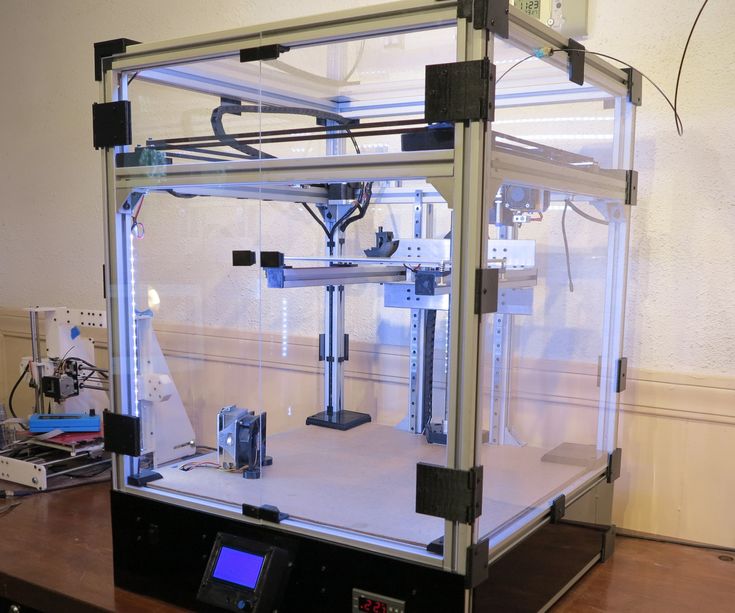
- If you’re super serious about your Nerf battles and you need to record them (and of course, have evidence of just how much better you are than your opponents!) you can find files to print attachments to mount a GoPro camera on your gun here.
We could go on about Nerf projects all day – mostly because Nerf guns are so much fun – but also because there are so many out there! If you, or your kids love Nerf gun fun then you’ll almost certainly want to check out this post – we got inspired just by looking through it.
Lightsaber projects
When we said this section was for kids young and old, we meant it! Whether you’ve loved the Star Wars films since you saw the first one in the cinema in 1977 or you’ve become a fan as your child has grown into them, you’ve probably dreamt of having your own lightsaber. And although buying one online is the easiest way to get your hands on one, building your own is way cooler.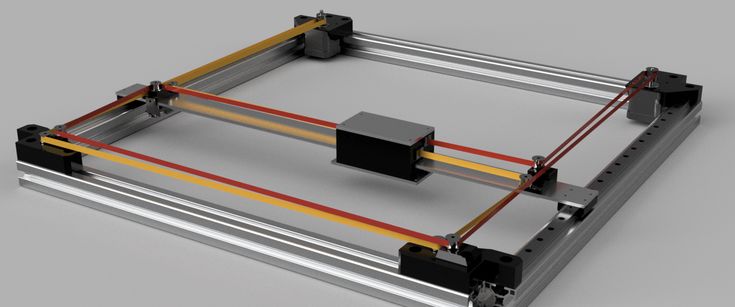 Whether you want to act as Luke Skywalker, Darth Vader or even Yoda, you’ll find plenty of lightsaber projects ready to go – and may the force be with you.
Whether you want to act as Luke Skywalker, Darth Vader or even Yoda, you’ll find plenty of lightsaber projects ready to go – and may the force be with you.
The possibilities are endless for Star Wars toys, since there are already a huge number of projects available for you to download and print without any modifications required. Search Star Wars on any of the community websites and you’ll find masks and models, through to other projects suitable for superfans such as:
- Star Wars snowflakes perfect for Christmas
- Cufflinks that are ideal for bringing a little more Force to your work shirt
- A whole Star Wars chess set that makes a fantastic gift idea
- A full size, wearable Stormtrooper helmet
The Infinity Gauntlet
The Marvel Cinematic Universe changed the way we thought about all kinds of things when we saw Avengers: Endgame.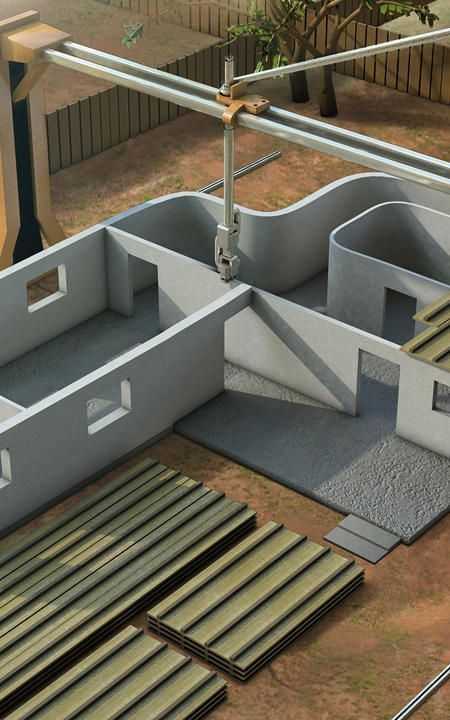 Just in case there is anyone who still hasn’t seen it, we won’t give anything away, but what we do know is that Thanos really taught us the power of the Infinity Gauntlet – and there are plenty of kids who would love the chance to play and snap things into place! Luckily, there are enough Infinity Gauntlet projects that are already created and available for new 3D printer users to download – and this one is life sized, complete with all the stones.
Just in case there is anyone who still hasn’t seen it, we won’t give anything away, but what we do know is that Thanos really taught us the power of the Infinity Gauntlet – and there are plenty of kids who would love the chance to play and snap things into place! Luckily, there are enough Infinity Gauntlet projects that are already created and available for new 3D printer users to download – and this one is life sized, complete with all the stones.
While we’re on the topic of Marvel and superheroes, there are quite literally thousands of projects available – search for your favourite character, or try some of these:
- Captain Marvel emblem earrings
- Baby Groot flower pot
- Mjolnir keychain (that’s Thor’s hammer!)
- An Iron Man SD card holder
Remote controlled cars
Continuing the theme of 3D printing projects that are great for kids young and old, we can’t not mention remote controlled cars. Of course, 3D printing doesn’t do the electronics bit, so this is a bit more of a project than just sending the job to the printer, but most of these types of projects have a lot of people that contribute to them.
Of course, 3D printing doesn’t do the electronics bit, so this is a bit more of a project than just sending the job to the printer, but most of these types of projects have a lot of people that contribute to them.
- This particular project allows you to print Formula 1 style cars (be sure to print using the right colours for your favourite team) and has a guide for the electronics
- This project helps to create a monster truck body for an RC car
- This one is to 3D print a dune buggy or go-kart
Once you’ve created a load of remote controlled cars, you’re probably going to need somewhere to store them – and since you put in the work to make them, you’re not likely to want to put them away in a box somewhere! How about printing yourself wall mounts so you can see the brilliance of your skills?
Toothpaste tube roller
Technically this isn’t just a print for kids, but we’ve seen enough kids squeeze toothpaste from all kinds of different angles (and we have cleaned the toothpaste up from the floor too!) so we think kids are the ones who will benefit the most from this toothpaste tube roller project.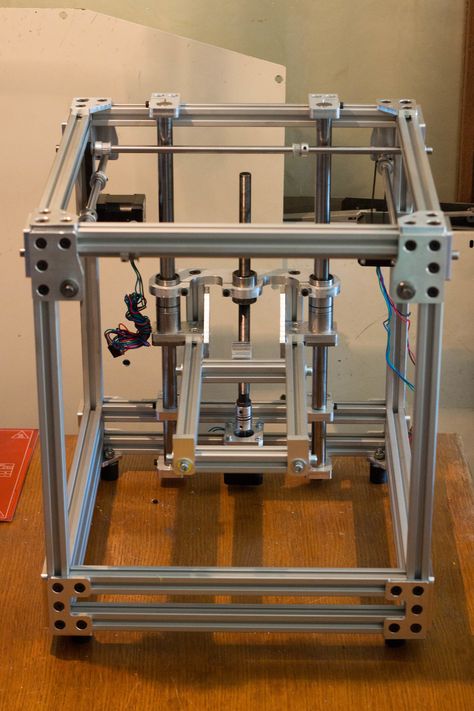 Simply put the end of the toothpaste tube in and start rolling! It’ll help you and your family get as much out of a toothpaste tube as possible too, which is a great bonus.
Simply put the end of the toothpaste tube in and start rolling! It’ll help you and your family get as much out of a toothpaste tube as possible too, which is a great bonus.
Storage cube for Nintendo Switch games
Kids love Nintendo Switch – but neither parents nor kids love it when those expensive little game cartridges go missing. This storage cube project has storage for 22 cartridges, and folds up into a cool little box that is easily carried anywhere, and will stop any of those meltdowns happening when cards have been lost – because they simply won’t get lost anymore!
Of course, with so many different games available for the Switch, the 3D community have gone to town designing cool accessories to suit all different types and for different abilities.
- This switcherang travel controller looks incredible
- An attachable grip
- A stand to allow for playing when the Switch is plugged in
Although we’ve looked at the Nintendo Switch here, if the console of choice in your household is either Xbox or PlayStation based, simply search the communities for them.
Barbie accessories
Little ones who love their dolls are always looking for accessories so they can play out real life scenarios in their Barbie world. While you could spend countless thousands on official accessories, if you’ve got a 3D printer then creating personalised pieces can be a great way to keep your child happy. We think a folding laptop for Barbie when she goes out on business will inspire some fantastic imaginative play, while a flat screen TV and furniture for her house can make it feel like home. If your little one has managed to fall and break a bone and is in a plaster cast, or loves playing doctors and nurses, then creating a cast and crutches for Barbie to wear means they can play to their heart’s content. There are so many other fantastic projects that we could mention – so search the communities to find the perfect project for your Barbie fan.
Board game pieces
Ever had a board game that you’ve lost a piece for? We would be willing to bet that you probably have. You’ll be able to rescue your favourites by 3D printing your lost pieces. MyMiniFactory has files available for all kinds of board games, from classics like Scrabble tiles and chess pieces, to more unusual board game accessories like life counters for Magic The Gathering or boxes for specialist dice.
You’ll be able to rescue your favourites by 3D printing your lost pieces. MyMiniFactory has files available for all kinds of board games, from classics like Scrabble tiles and chess pieces, to more unusual board game accessories like life counters for Magic The Gathering or boxes for specialist dice.
Best practical projects
As much as we love a fun, cool or geeky project, we love a useful print job more. If you’re looking for really practical print jobs, there are a lot of projects to print tools of all different shapes and sizes – meaning if you need a spanner or a screwdriver after the shops have shut on a Sunday, you can print your own to get your job done.
But in addition to printing your own tools, there are absolutely loads of different projects that you can download and print to make life just that little bit easier. With many of these prints, there are often other ways to work around the issue (such as with the next project we’re going to mention), but having something that is designed to specifically solve a problem in the way that you want to solve it? That’s a really satisfying print. Here are some of our favourites.
Here are some of our favourites.
Drill bit storage
There are few of us that haven’t been told when borrowing someone’s power tools that “all the bits had better be there when you bring it back!” And now we’re a bit older, we appreciate the convenience of being able to find our drill bits the exact moment that we want them. Searching any of the communities for drill bit storage will bring you plenty of results that might suit your needs (or the needs of your power tool owner!) but we love this one, since it works perfectly with the Ikea Jansjö work lamp, and doesn’t need any additional desk space.
Screw measuring device
When you need a screw that is a certain measurement, you don’t want to be digging through an old biscuit tin full of screws, nuts and bolts and grappling with your steel ruler. Finding the right screw is much quicker when you can rest them in a neat little tray with the measurements marked out on the side. There are some great projects that print screw measuring devices like this one – very handy.
Bike accessories
We’re all trying to squeeze in a bit more exercise these days. Riding your bike to and from work is a convenient way to fit in a bit more exercise, but what if you need to be able to carry your morning coffee on your bike too? Try printing this holder for your bike. If you’re fed up of getting splashed when you get caught in the rain, printing a mudguard is a great little project that doesn’t take much to fit, and if you need to be able to use your phone as a sat nav, print yourself a mobile phone holder to attach to your handlebars.
Spool desk tidies
Whether the desk in question is really a garage workbench, is in a sewing room or is just where the PC is, this is a great way to use up those empty spools that you don’t really know what to do with, but don’t want to just throw out. This desk holder is a great project to compartmentalise those fiddly little bits – whether they are pins, needles and buttons, nuts and bolts or USB dongles for wireless devices – and to upcycle those empty spools that you’re not quite sure what to do with.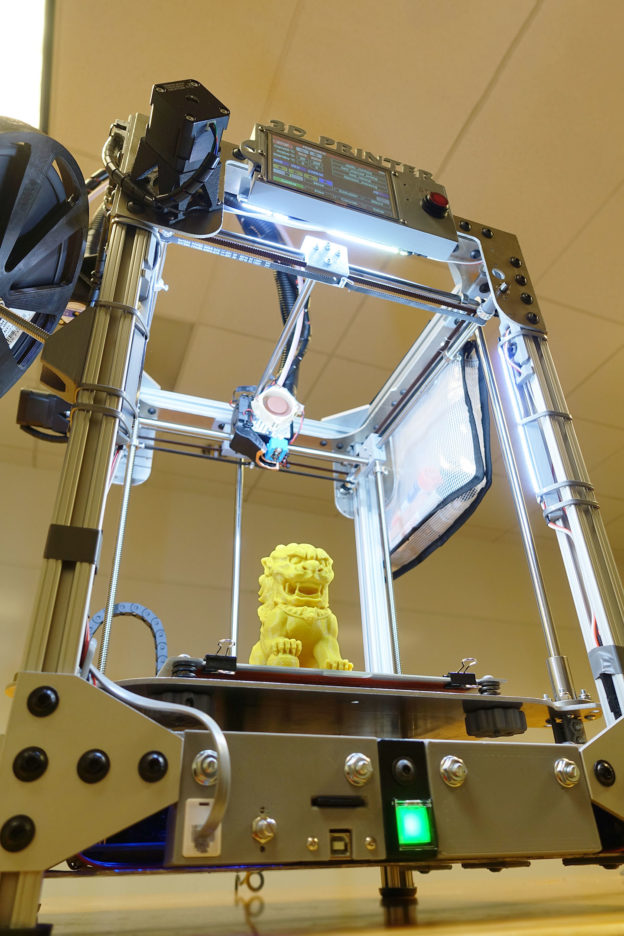
Desk caddies, pencil pots and other types of office storage items are prolific on 3D printing communities – although some are more spectacular than others! Have a good look at the options before you opt for a standard cup style pot for your pens and pencils.
Zip toggles
How annoying is it when a zip pull breaks? Well, it might be a relatively minor inconvenience in the grand scheme of things, since you can use a split ring as a workaround – but what if your zipper could be fixed permanently, in a way that doesn’t announce “I broke my zip” to the world? Someone has thought of this – and this universal zip toggle is a much better fix to keep your trusty backpack (or any other item with a zip!) going for much, much longer.
Bag clip with a screw cap
Keeping plastic food bags closed to keep the contents fresh has been an issue for years – especially when the contents are easily spilled when they are poured. Regular plastic clips and pegs are great, but this project for a bag clip with a screw cap on it is so simple, it is borderline genius and will ensure you’ll never encounter cereal, cat food or coffee beans on your kitchen worktop ever again.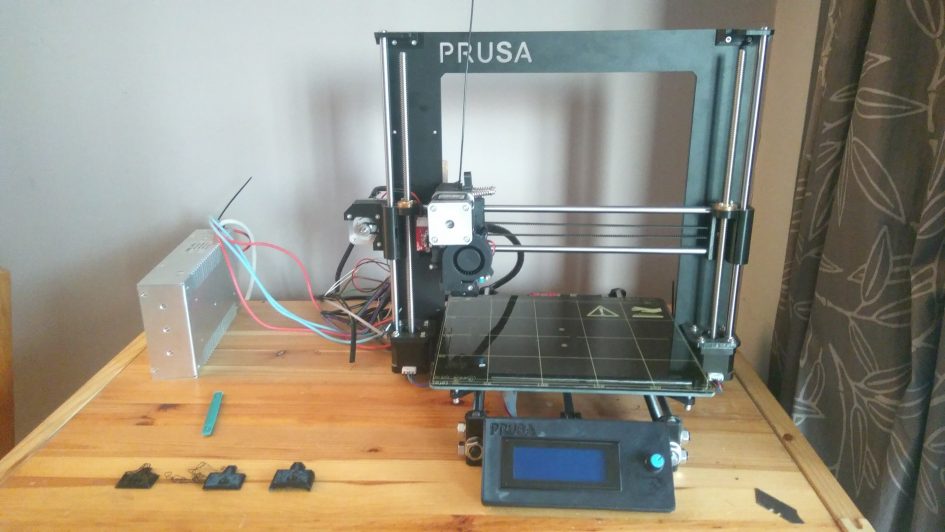 One printer said this was one of their top five favourite things they have printed – so we think this is a really handy print that you’re bound to want to produce over and over again.
One printer said this was one of their top five favourite things they have printed – so we think this is a really handy print that you’re bound to want to produce over and over again.
Spare keys
Keys might typically be made from metal, but did you know that plastic ones work exactly the same, and that you can 3D print any key? This is a great way to ensure that you have a spare available (or can make a copy) whenever you need it. You’ll need to have a little bit of knowledge of 3D modelling to make this work, but it really is a great project to have a go at – and you’ll have a useful spare key when you’ve cracked it too!
Fans
Although the summer days might be fading away, before we know it they will come back around again. Buying a bladeless fan from a big name brand is outside of many people’s budgets, but there are many projects online to 3D print your own. These projects are a little more in-depth, and require some electrical work so might not be ideal for your first project, but they’re definitely worth the effort. You’ll be glad you made the effort when that first heat wave hits next year!
You’ll be glad you made the effort when that first heat wave hits next year!
Great projects for at home
In this final section, we’re taking a look at some of the projects that are suitable for anyone, of almost any age. Some are really useful, while others are just plain fun.
Cases and accessories for phones and tablets
Phone cases aren’t just there to help protect our phones when we drop them for the 300,000th time since we got them – they’re also there to help us identify our phone when we’re out with friends. While there are countless different cases available to buy for very little money on Amazon or eBay, why would you spend money on one that you might spot on someone else’s phone, when you could print your own design?
You can find absolutely loads of phone and tablet case designs on different websites with the files ready to go. We particularly love this case, with the built-in working gears – it’s like having a fidget cube with you all the time! Other accessories that make for a great simple first project include this mobile phone wall dock, stands for tablets and holders for while devices are on charge.
Cable accessories
Anyone who has worked in a technical industry has probably encountered the dreaded cable tie. They are functional and do the job they need to do – they tie cables and keep them neat – but they aren’t great for the environment, since you have to cut and bin them when you need to take a cable out. Enter cable clips – they are small and easy to print, and you can open and close them repeatedly, so they are a much better option. This project is a great one.
While we’re talking about cables though, there are absolutely loads of options to help with storage and keeping all types of cables secure – from Android cable stands to headphone storage and cable clamps. Whatever annoys you when it comes to keeping cables rolled up and out of the way, you’re likely to find the answer on a 3D printing community website.
Electric coffee maker
Coffee is a pretty important thing at Hobarts – we don’t really enjoy a morning without one! While most of the time our coffee goes from the tin into the mug with hot water, we’re pretty fascinated with this electric coffee maker. There are full instructions available, but if you’re not quite confident in your electricity skills, you still have options – here is a hobo coffee maker that uses a Red Bull can. Still not convinced that you’ll get the standard of coffee you prefer but want to improve your coffee? Try searching for accessories like mugs, coffee cup sleeves, spoon rests or sieves to personalise your chocolate powder being shaken over the top.
There are full instructions available, but if you’re not quite confident in your electricity skills, you still have options – here is a hobo coffee maker that uses a Red Bull can. Still not convinced that you’ll get the standard of coffee you prefer but want to improve your coffee? Try searching for accessories like mugs, coffee cup sleeves, spoon rests or sieves to personalise your chocolate powder being shaken over the top.
Bottle opener and cap gun
This is a want to have rather than a need, but it is absolutely fun to make and play with each time you open a beer! Opening a beer bottle isn’t a hard thing to do, nor is it difficult to find a bottle opener (most of the time, anyway!) but this bottle opener with inbuilt cap gun is absolutely designed to be a hit at parties. Just be sure to set up a target so that people are encouraged to aim away from eyes…! Check out the video below.
Digital sundial
We might be almost at the end of summer as we write this post, but this digital sundial is just so cool that we couldn’t not include it in our list.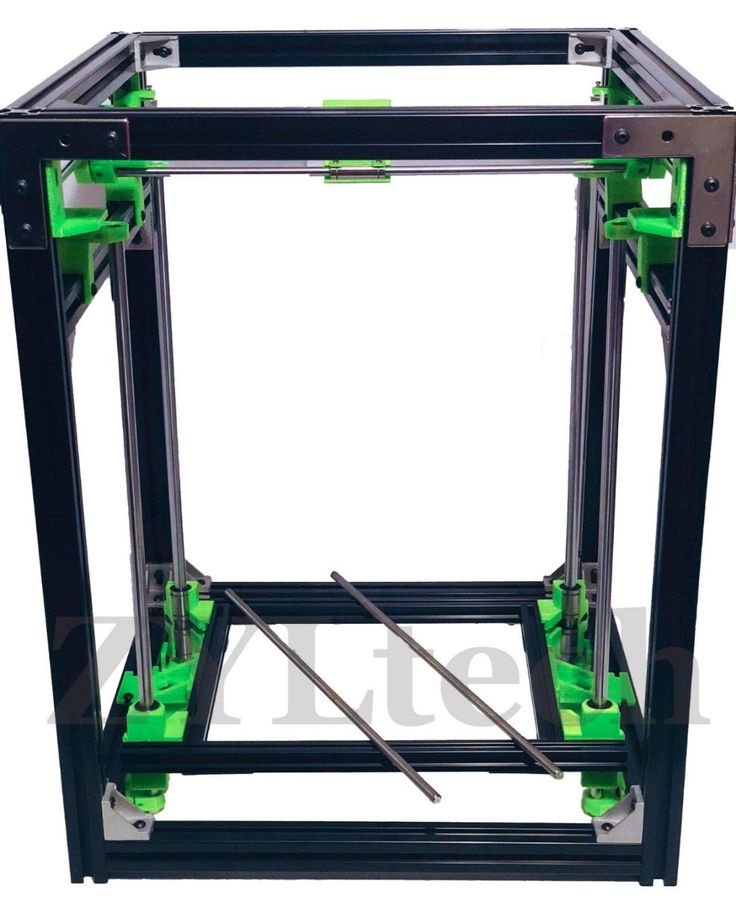 Unlike traditional sundials that cast their shadow to point to a time, this one displays the time, in digits, inside its shadow. We can’t imagine how long it took the original designer to create and test, but we really want one for our garden…!
Unlike traditional sundials that cast their shadow to point to a time, this one displays the time, in digits, inside its shadow. We can’t imagine how long it took the original designer to create and test, but we really want one for our garden…!
The time updates every 20 minutes, so it isn’t one you can be accurate to the minute with – don’t use it to time your morning boiled egg! However, the magical nature of this print makes it well worth the effort. We can imagine it getting admiring glances during those long, lazy days of summer when you only need to measure how long it has been since your last trip to the fridge for another cold one.
Secret storage shelf
There have been many times when we have needed somewhere to hide something – from our secret diaries as children to needing somewhere unsuspecting to put our passports or a bit of extra cash. This shelf unit looks like a regular floating shelf, but when you print it, it has a secret tray inside that you can hide your treasures in. With an ornament or decoration on top, you’ll be able to hide your valuables in plain sight. Genius.
With an ornament or decoration on top, you’ll be able to hide your valuables in plain sight. Genius.
Cookie cutters
Cookie cutters aren’t hard to come by. Search Amazon or eBay and you’re bound to find all kinds of shapes and sizes that you can use to create delicious themed treats! Sometimes though, you can’t find quite what you’re looking for, or you don’t want to wait for delivery – especially if there is a wait. Making treats for your pup, or perhaps for Halloween? Try this bone cookie cutter. Batman fans will adore you for creating Batman biscuits, while younger children will love their own Peppa Pig biscuits. There are so many great cookie cutter designs out there that we could talk all day about them – but now we fancy a cup of tea and a biscuit!
Candy dispensers
When you’ve bought a bag of sweets, it isn’t ideal to eat all of them in one go. If you’re trying to keep yourself (or others!) from grazing through the bag in the course of an afternoon, try 3D printing a candy dispenser. Choose from an old-fashioned gumball machine style one, to a zombie dispenser that is perfect for storing Halloween candy, or this Mojo Jojo monkey candy dispenser. You can even upcycle a Nutella glass in this project!
Choose from an old-fashioned gumball machine style one, to a zombie dispenser that is perfect for storing Halloween candy, or this Mojo Jojo monkey candy dispenser. You can even upcycle a Nutella glass in this project!
Decorations
Whatever the occasion, there is always a perfect decoration that somebody wants but that just can’t be found. Whether it is the perfect snowflake or Santa for Christmas, cake decorations for birthdays or more risqué ornaments for stag or hen parties, you will find countless possibilities on 3D printing communities.
Our final thoughts
When you’ve got your hands on your at home 3D printer for the first time, we have absolutely no doubt that you’ll be raring to get going. You might even have something in mind that you want to design and make – and that’s fantastic. But if you’re not quite sure where to start, or perhaps this is your first foray into the world of 3D printing, then you’ll be looking for ideas of things to print, so that you don’t waste your materials, or your time and effort setting up the print.
While we’ve linked to some great print projects here, don’t forget that if you’re not quite certain about the project we’ve linked to – because you want something slightly different perhaps – then search the different communities. There are a vast number of 3D printer designs available, so if you want something a little different, don’t settle – you’re sure to find just what you’re looking for.
Finally – when it is time to order your next lot of supplies, be sure to check out our range of consumables, and if you find you’re printing a lot then consider our servicing options to keep you on track.
From the 80s to Today
3D Learning Hub
See all categories
Contents:
- Introduction
- The 1980s: Birth of the main 3D Printing Techniques
- The 1990s: Emergence of the Main 3D Printers Manufacturers & CAD tools
- The 2000s: 3D Printing Gains Media Visibility
- The 2010s: Years of Visibility, Innovation and Hopes for 3D Printing
- What about now, and what about the future?
Introduction
3D printing is not as new as you may think! Actually, FDM (Fused Deposition Modeling) technology became quite popular and impressive for the general public around 2009 because of its media coverage. At some point, a lot of people actually thought that FDM was the only additive manufacturing technology. But FDM is not even the first 3D printing technology developed, and 3D printing actually started in the 1980s.
At some point, a lot of people actually thought that FDM was the only additive manufacturing technology. But FDM is not even the first 3D printing technology developed, and 3D printing actually started in the 1980s.
Here is a quick 3D printing timeline from the 1980s to today. The history of 3D printing is fascinating. The first machines, the great expectations, and the many 3D printing applications that are now flourishing. Let’s take a look back at the 3D printing history.
The 1980s: Birth of the main 3D Printing Techniques
The concept of 3D printing has been imagined back in the 1970’s, but the first experiments are dated from 1981. The first 3D printing attempts are granted to Dr Kodama for his development of a rapid prototyping technique. He was the first to describe a layer by layer approach for manufacturing, creating an ancestor for SLA (or Stereolithography): a photosensitive resin was polymerized by an UV light. Unfortunately, he did not file the patent requirement before the deadline.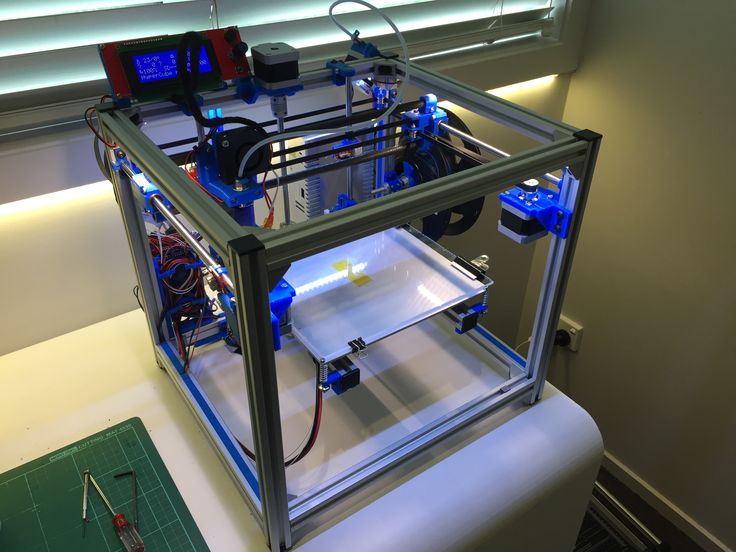
A few years later, a French team of engineers, Alain Le Méhauté, Olivier de Witte and Jean-Claude André, was interested by the stereolithography but abandoned due to a lack of business perspective. This 3D printing attempt was also using a stereolithography process.
If you want more information about these first experiences, check out our interview of Jean-Claude André. At the same time, Charles Hull was also interested in the technology and submitted a first patent for stereolithography (SLA) in 1986. He founded the 3D Systems Corporation and in 1988, released the SLA-1, their first commercial product.
If SLA was the first 3D printing technology developed, what about SLS (Selective Laser Sintering) and FDM (Fused Deposition Modeling) back then?
In 1988, at the University of Texas, Carl Deckard brought a patent for the SLS technology, another 3D printing technique in which powder grains are fused together locally by a laser.
In the meantime, Scott Crump, a co-founder of Stratasys Inc. filed a patent for Fused Deposition Modelling (FDM). In less than ten years, the three main technologies of 3D printing were patented and 3D printing was born!
filed a patent for Fused Deposition Modelling (FDM). In less than ten years, the three main technologies of 3D printing were patented and 3D printing was born!
To resume:
1980: First patent by japanese Dr Kodama Rapid prototyping
1984: Stereolithography by French engineers then abandoned
1986: Stereolithography taken up by Charles Hull
1988: First SLA-1 machine
1988: First SLS machine by DTM Inc then buy by 3D system
The SLA 1The 1990s: Emergence of the Main 3D Printers Manufacturers & CAD tools
Now that the basics were established, the evolution of additive manufacturing is pretty fast. The main 3D printers manufacturers are emerging, new technologies are perfected, and 3D modeling tools start to be developed as well, bringing additive manufacturing to the next level.
In Europe, EOS GmbH was founded and created the first EOS “Stereos” system for industrial prototyping and production applications of 3D printing. Its industrial quality is today recognized worldwide in SLS technology (Selective Laser Sintering technology) for plastics and metals.
Its industrial quality is today recognized worldwide in SLS technology (Selective Laser Sintering technology) for plastics and metals.
In 1992, the Fused Deposition Modeling patent was issued to Stratasys, which developed many 3D printers for both professionals and individuals. From 1993 to 1999, the main actors of the 3D printing sector emerged with various techniques:
ZCorp and binder jetting: Based on MIT’s inkjet printing technology, they created the Z402, which produced models using starch- and plaster‐based powder materials and a water‐based liquid binder
Arcam MCP technology and Selective Laser Melting.
At the same time, we can see that more and more new CAD tools, allowing to create 3D models, are becoming available and developed, with, for example, the creation of Sanders Prototype (now known as Solidscape), one of the first actors to develop specific tools for additive manufacturing.
Charles Hull was awarded the European Inventor Award in the Non-European countries category, by the European Patent Office Price in 2014.
To resume:
1990: First EOS Stereos system
1992: FDM patent to Stratasys
1993: Solidscape was founded
1995: Z Corporation obtained an exclusive license from the MIT
1999: Engineered organs bring new advances to medicine
Charles Hull was awarded the European Inventor Award in the Non-European countries category, by the European Patent Office Price in 2014.The 2000s: 3D Printing Gains Media Visibility
In 2000, the millennium saw the first 3D printed kidney, but we would have to wait 13 more years to see it transplanted into a patient. 3D printed kidneys are now working perfectly and researchers are experimenting on accelerated growth to transplant organs very rapidly.
2004 was the year of the initiating of the RepRap Project which consists of a self-replicating 3D printer. Yes, it is possible to 3D print a 3D printer. This open-source project led to the spreading of the FDM 3D desktop 3D printers, and of the popularity of the technology in the makers community.
In 2005, ZCorp launched the Spectrum Z510, the very first high-definition color 3D printer.
In 2008, 3D printing reached an even greater media presence thanks to another medical application: the first 3D printed prosthetic limb.
This amazing medical 3D printing project incorporated all parts of a biological limb, was printed ‘as is’, without the need for any later assembly. Nowadays, combined with 3D scanning, 3D printed medical prosthesis and orthosis are more and more cheaper and faster to get for the patient. Moreover, these prostheses are more and more optimized and adapted to the morphology of the patient. Additive manufacturing is bringing new opportunities regarding mass-customization.
http://www.ufunk.net/en/tech/exo-prosthetic-leg/2009 was the year in which the FDM patents fell into the public domain, opening the way to a wide wave of innovation in FDM 3D printers, a drop of the desktop 3D printers price, and consequently, since the technology was more accessible, an increased visibility.
2009 was also the year Sculpteo’s online 3D printing service was created, one of the pioneers of the now flourishing online 3D printing services, another step toward 3D printing accessibility!
To resume:
2000: a 3D printed working kidney is created
2000: MCP Technologies (an established vacuum casting OEM) introduced the SLM technology
2005: Z Corp. launched Spectrum Z510. It was the first high-definition color 3D Printer on the market.
2006: An open source project is initiated (Reprap)
2008: The first 3D printed prosthetic leg
2009: FDM patents in the public domain
2009: Sculpteo is created
The 2010s: Years of Visibility, Innovation and Hopes for 3D Printing
The recent years have been very important for 3D Printing. With the FDM patent expiration, the first years of the decade have become the years of 3D printing. Additive manufacturing is then becoming a real and affordable prototyping and production technique for businesses, opening new possibilities
In 2013, President Barack Obama mentioned 3D printing as a major issue for the future in his State of the Union speech, which made “3D printing” an absolute buzzword.
It is now very present in the general public’s mind, and in policy makers’ decisions. The technology is forever progressing, just as are the uses of this technology. More and more small and big companies take advantage of the low prototyping price that 3D printing offers, and have fully integrated it in their iteration, innovation and production processes.
In 2010, Urbee was the first 3D printed car. Its body was fully 3D printed using a very large 3D printer. Now, the 3D printed car is progressively becoming a reality, and additive manufacturing is taking more and more space in the automotive sector. Indeed, from the integration of 3D printing technology for the tooling process, to 3D printed car parts, additive manufacturing appears to be quite helpful on many levels, helping to go through brand new challenges.
credit: EDAG3D printing technology keeps on evolving, and progressing. New 3D printers are being issued regularly, they are more efficient, they print faster, and they give access to new 3D printing materials. Technologies like CLIP (DLS) are being developed by Carbon, making the printing process even faster and more accurate than ever.
Technologies like CLIP (DLS) are being developed by Carbon, making the printing process even faster and more accurate than ever.
If you check the offers of our online 3D printing service, you will find a wide-range of materials from strong and accurate 3D printed resins such as Rigid Polyurethane, to 3D printed flexible plastic, and heat resistant 3D printed metals: everything is now printable, making it easy for companies to find materials adapted to their needs and products.
New 3D printing materials are being explored every day, from Daniel Kelly’s lab who’s 3D printing bone to the French startup XtreeE, who’s 3D printing concrete to revolutionize the construction industry! Indeed, regarding architecture application, 3D printing concrete is now a real thing, and families are starting to move into 3D printed houses. The first family to move into a 3D printed house actually did in 2018. The house is 1022 square feet, is perfectly habitable and took two days to print.
To resume:
2010: Urbee is the first 3D printed prototype car presented
2011: Cornell University began to build 3D food printer.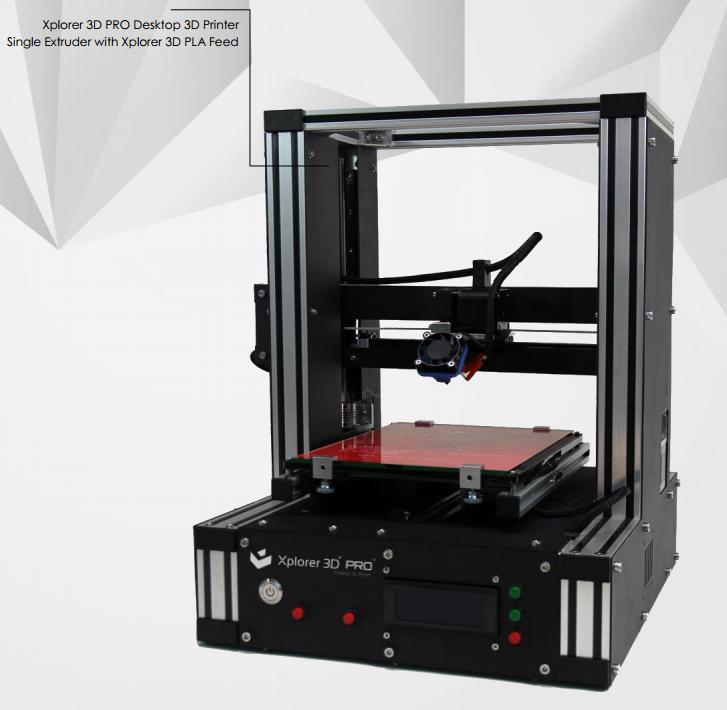
2012: The first prosthetic jaw is printed and implanted
2013: “3D printing” in Obama’s State of the Union speech
2015: Carbon 3D issues their revolutionary ultra-fast CLIP 3D printing machine
2016: Daniel Kelly’s lab announces being able to 3D print bone
2018: The first family moves into a 3D printed house
The 2020s: the arriving of more advanced Additive Manufacturing materials
Additive manufacturing is now offering the possibility to create parts for demanding sectors using advanced materials such as extremely resistant and rigid materials, or professional flexible plastics: we call them high performance materials. It is also a way to implement more sustainable manufacturing using bio-based materials, with a series of Nylon PA11 materials. BASF and Sculpteo are combining their strengths to offer you these high-performance materials and help you go even further in your projects.
Some of these impressive materials are offering thermal resistance, chemical resistance, or even heat resistance for the most demanding applications.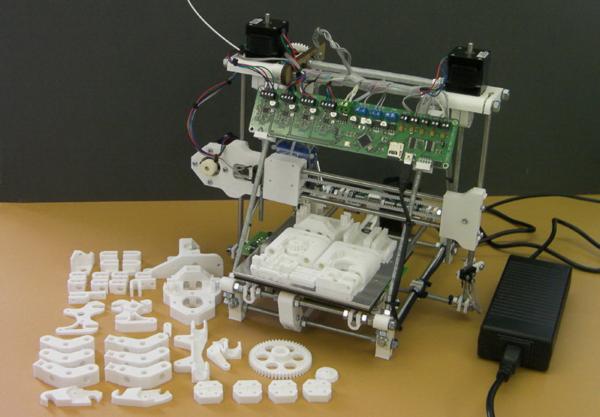
You can try out some interesting materials such as Ultrasint® PA11 ESD and its electrostatic discharging properties, Ultrasint® PA11 CF reinforced with carbon fibers for more rigidity, Ultrasint® PA11 & MJF PA11 bio-based powders with great resistant properties, Ultrasint® PA6 FR a flame-resistant material, Ultrasint® PA6 MF mineral filled for more resistance, Ultrasint® TPU88A & TPU01 for resistance and flexibility
What about the future?
We can see today that 3D printing is revolutionizing big sectors such as automotive, architecture or medical. But where can this technology still improve?
3D Bioprinting is becoming a big subject for the medical field. Indeed, applications of 3D bioprinting could be numerous. You can easily see the diverse advantages of this technology. It could create human tissue for burn victims. It is also a way to create human organs, in order to perform organ transplants. We can see today that there is not enough donors and bioprinting could be an excellent, fast, and life saving solution. The 3D bioprinting technology could allow to create various tissue structures, such as kidney tissue, skin tissue.
The 3D bioprinting technology could allow to create various tissue structures, such as kidney tissue, skin tissue.
3D printing for architecture is also improving, but could really become bigger in the upcoming years. Projects faster to build, cheaper, and that avoid material waste: the benefits of this technology for the construction sector are numerous.
Additive manufacturing will also have a great role to play in the transition towards more sustainable manufacturing techniques. 3D printing already offers sustainable advantages but still has improvements to make, especially in terms of renewable materials.
3D printing hasn’t reached its limits and many projects and amazing stories are waiting to be written. We already imagine this future in our article on the innovations to come in 3D printing and the top 10 materials 3D printing materials of the future that already exist!
Are you ready to write the future of 3D printing history, and improve your manufacturing process? Start your 3D printing project now. upload your 3D file here and choose among our 3D printing materials catalog to make the most of our 3D printing service.
upload your 3D file here and choose among our 3D printing materials catalog to make the most of our 3D printing service.
Voir aussi:
- Return to Top
Get the latest 3D printing news delivered right to your inbox
Subscribe to our weekly newsletter to hear about the latest 3D printing technologies, applications, materials, and software.
History of 3D printing
In this section, we wanted to trace the history of 3D printing from its inception to the present day, as well as give a forecast regarding the future development of technology.
The first 3d printer was invented by the American Charles Hull, he worked on the technology of stereolithography (SLA), a patent for the technology was issued in 1986. The printer was a fairly large industrial installation. The installation "grew" a three-dimensional model by applying a photopolymerizable material to a moving platform.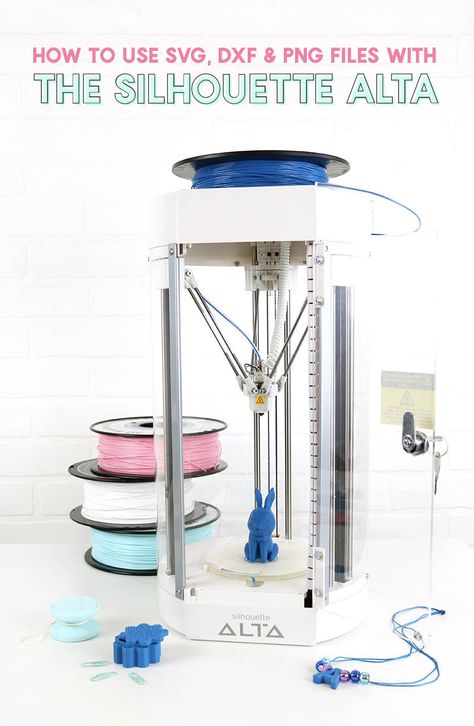 The basis was a digital model pre-modeled on a computer (3D model). This 3d printer created three-dimensional objects, rising by 0.1-0.2 mm - the height of the layer. Despite the fact that the first device had many disadvantages, the technology has received its application. Charles Hull is also the co-founder of 3dsystems, one of the world's leading manufacturers of industrial 3D printers.
The basis was a digital model pre-modeled on a computer (3D model). This 3d printer created three-dimensional objects, rising by 0.1-0.2 mm - the height of the layer. Despite the fact that the first device had many disadvantages, the technology has received its application. Charles Hull is also the co-founder of 3dsystems, one of the world's leading manufacturers of industrial 3D printers.
Charles Hull was not the only one to experiment with 3D printing technology, as in 1986 Carl Deckard invented Selective Laser Sintering (SLS). You can learn more about the method in another article, briefly: a laser beam sinters a powder (plastic, metal, etc.), while the mass of the powder is heated in the working chamber to a temperature close to the melting point. The basis is also a digital model pre-modeled on a computer (3D model). After the laser passes through the horizontal layer, the chamber is lowered to the layer height (usually 0.1-0.2 mm), the powder mass is leveled with a special device and a new layer is applied.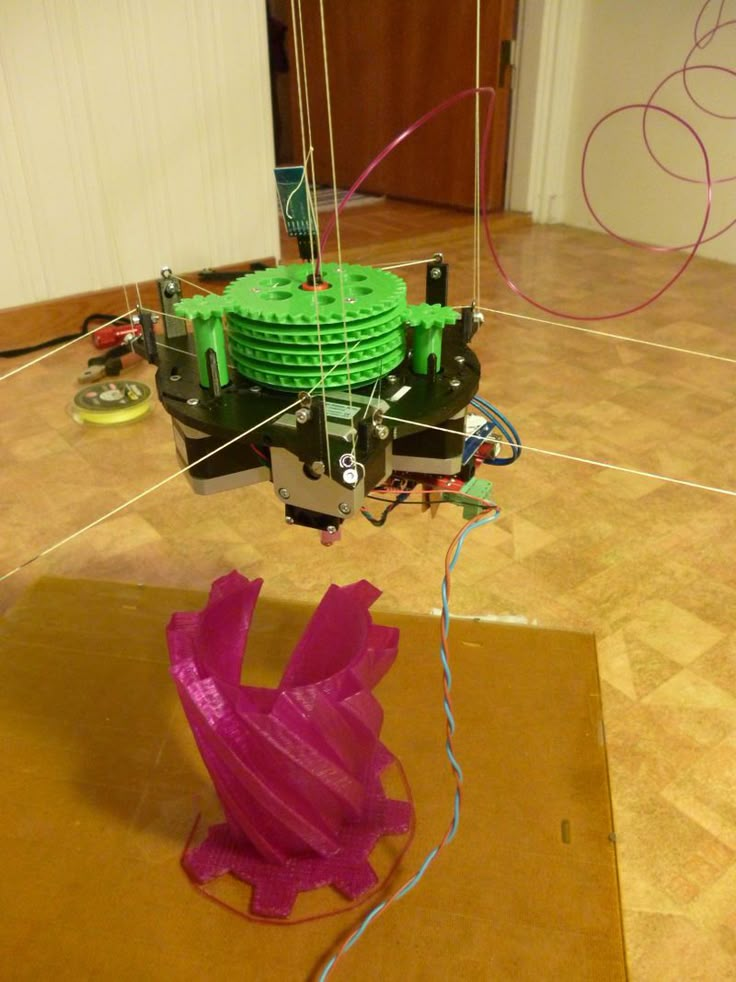
However, the most famous and widespread 3D printing method today is layer-by-layer direction (FDM). The idea of technology belongs to Scott Crump (Scott Crump), the patent dates back to 1988. You can learn more about the method in another article, in short: material (usually plastic) is fed from the heated nozzle of the print head using a stepper motor, the print head moves on linear guides along 1 or two axes, and the platform moves along 1 or 2 axes . The basis of the movement is also a 3D model. The molten plastic is laid on the platform along the established contour, after which the head or platform is moved and a new layer is applied on top of the old one. Scott Crump is one of the founders of Stratasys, which is also one of the leaders in the production of industrial 3D printers.
All the devices described above belonged to the class of industrial devices and were quite expensive, so one of the first 3d Dimension printers from Stratasys in 1991 cost from 50 to 220 thousand US dollars (depending on the model and configuration). Printers based on the technologies described above cost even more and until very recently, only a narrow circle of interested specialists knew about these devices.
Printers based on the technologies described above cost even more and until very recently, only a narrow circle of interested specialists knew about these devices.
Everything began to change since 2006, when the RepRap project (from the English Replicating Rapid Prototyper - a self-replicating mechanism for rapid prototyping) was founded, with the goal of creating a self-copying device, which was a 3D printer working on technology FDM (layer by layer deposition). Only, unlike expensive industrial devices, it looked like a clumsy invention made from improvised means. Metal shafts serve as a frame, they also serve as guides for the print head. driven by simple stepper motors. The software is open source. Almost all connecting parts are printed from plastic on the 3D printer itself. This idea originated among English scientists and aimed at spreading available additive technologies so that users can download 3D models on the Internet and create the necessary products, thus minimizing the production chain.
Leaving aside the ideological component, the community (which exists and develops to this day) managed to create a 3d printer accessible to the "ordinary person". So a set of unprinted parts can cost around a couple of hundred US dollars and a finished device from $500. And even though these devices looked unsightly and were significantly inferior in quality to their industrial counterparts, all this was an incredible impetus for the development of 3D printing technology.
As the RepRap project developed, 3D printers began to appear, taking as a basis the base laid down by the movement in technical and, sometimes, ideological terms (for example, commitment to the concept of open source - OpenSource). The companies that made printers tried to make them better both in terms of performance, design and user experience. The first RepRap printers cannot be called a commercial product, since it is not so easy to manage (and even more so to assemble) and it is not always possible to achieve stable work results.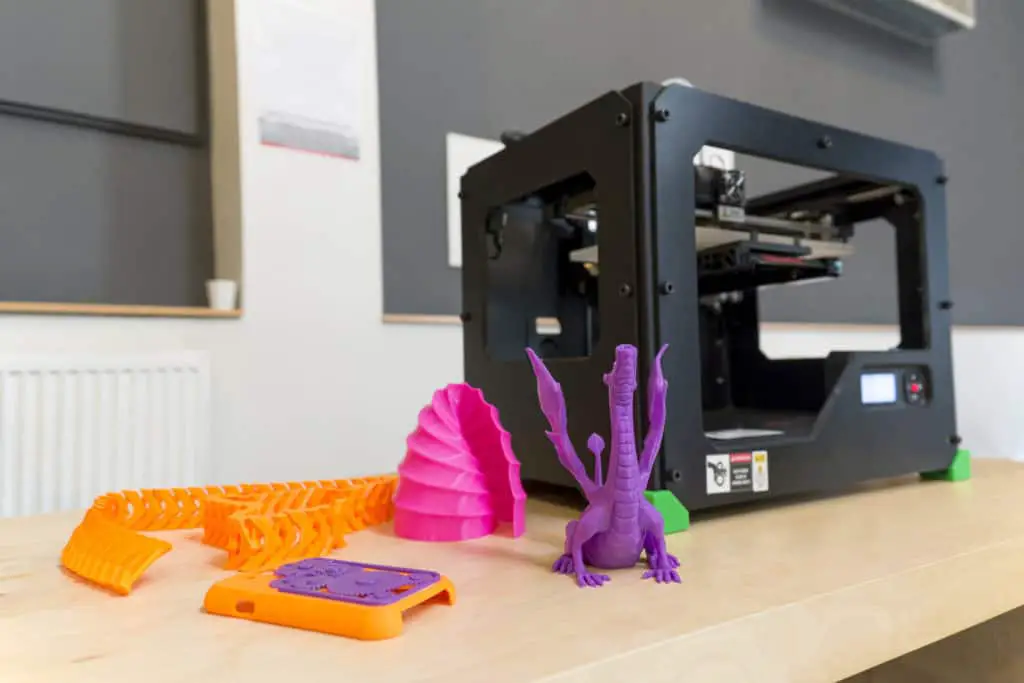 Nevertheless, companies tried to close the more than significant gap in quality, leaving a significant gap in cost whenever possible.
Nevertheless, companies tried to close the more than significant gap in quality, leaving a significant gap in cost whenever possible.
First of all, it is worth mentioning the MakerBot company, which started as a startup, took RepRap ideas as a basis and gradually turned them into a product of a new quality.
Their flagship product (and in our opinion the best to this day) remains the MakerBot Replicator 2 3D printer. The model was released in 2012 and later discontinued, but remains one of the most popular 3D printer models to this day " personal" segment (according to 3dhubs). The word "personal" is in brackets because this printer, which cost $2,200 at the time of release, was (and is) primarily used for business purposes, but falls into the personal segment due to its cost. This model differs from its progenitors (RepRap), being, in fact, a finished commercial product. Manufacturers abandoned the concept of OpenSource, closing all sources and software codes.
In parallel with the release of equipment, the company actively developed the Thingiverse resource, which contains many models for 3d printing, available for download for free. During the development of the first printer and beyond, the community has helped the company a lot, testing the product and offering various upgrades. After the release of the Replicator 2 (and the closure of development), the situation has changed. You can learn more about the history of MakerBot and other companies and people associated with 3d printing by watching the film Print the legend.
This film also highlights the history of Formlabs, one of the first companies to launch an affordable 3D printer based on SLA (Strereolithography) technology. The company raised funds for the first FORM 1 model through crowdfunding, encountered production difficulties, but eventually released an affordable and productive 3D printer, closing the quality gap described above.
And although the 3D printers described above were far from perfect, they laid the foundation for the development of affordable 3D printing technology, which continues to this day.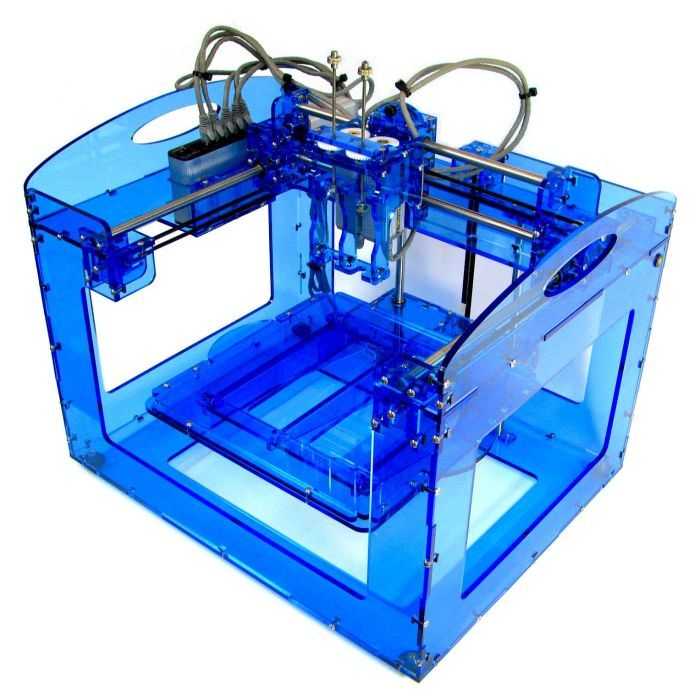 At the moment, the quality of FDM and SLA printers is increasing, but there is no significant price reduction, rather, on the contrary, it is growing slightly. Along with FDM and SLA, many companies are developing in the field of powder sintering (SLS), as well as metal printing. Despite the fact that such printers cannot be called affordable, their price is much lower in comparison with analogues from the professional segment. It is also worth noting the development of the line of materials, in addition to the standard ABS and PLA plastics, today many different materials are used, including nylon, carbon fiber and other durable and refractory materials.
At the moment, the quality of FDM and SLA printers is increasing, but there is no significant price reduction, rather, on the contrary, it is growing slightly. Along with FDM and SLA, many companies are developing in the field of powder sintering (SLS), as well as metal printing. Despite the fact that such printers cannot be called affordable, their price is much lower in comparison with analogues from the professional segment. It is also worth noting the development of the line of materials, in addition to the standard ABS and PLA plastics, today many different materials are used, including nylon, carbon fiber and other durable and refractory materials.
Personal 3d printers of today are very close to professional devices, the development of which also does not stop. In addition to the "founders" of the technology (Stratasys, 3dsystems), many small companies specializing in industrial 3D printing technologies (metal in particular) have emerged. 3D printing is also attracting the attention of large corporations, which, with varying degrees of success, are striving to take their place in a growing market. Here it is worth highlighting HP, which recently released the HP Jet Fusion 3D 4200 model, which has gained popularity among 3d printing professionals (as of 2018, it is at the top of the ranking of professional 3D printers in the quarterly reports of the 3dhubs portal).
Here it is worth highlighting HP, which recently released the HP Jet Fusion 3D 4200 model, which has gained popularity among 3d printing professionals (as of 2018, it is at the top of the ranking of professional 3D printers in the quarterly reports of the 3dhubs portal).
However, 3D printing technologies are developing not only in breadth, but also in depth. One of the main disadvantages of 3D printing, compared to other production methods, is the low speed of creating models. A significant advance in terms of accelerating 3D printing was the invention of CLIP technology by CARBON, printers operating on this technology can produce models 100 times faster than classic SLA technology.
There is also a constant expansion of the range, properties and quality of materials and post-processing of products. All this accelerates the transition to the use of 3d printers in production, and not just as prototyping devices. Today, many large and not only companies and organizations are closely using a 3D printer in their production chain: from consumer goods manufacturers NIKE and PUMA to BOEING and SPACE X (the latter prints engine parts for its rockets that could not be made in any other way) .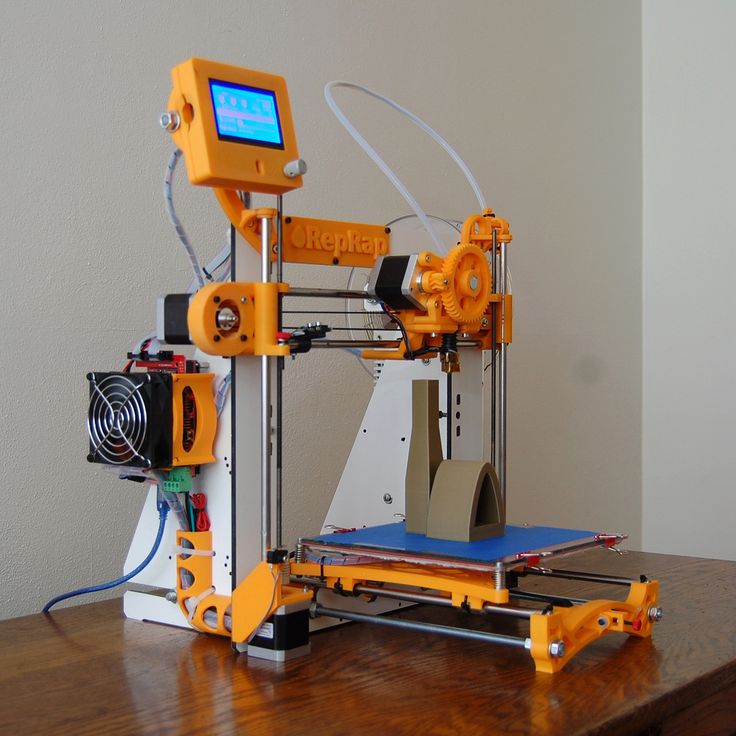
In addition to the "classic" scope of 3D printing, today more and more often you can see news about how a house or some organ (or rather, a small part of it) was printed on a 3D printer from bio-material. And this is true, several companies around the world are testing or already partially using 3D printing in the construction of buildings and structures. This mainly concerns the contour pouring of walls (similar to the FDM method) with a special composite concrete mixture. And in Amsterdam there is a 3D printed bridge project and this list will only expand over time, since the use of 3D printing in construction can significantly reduce costs and increase the speed of work at certain stages.
With regards to medicine, here 3D printing also finds application, but at the moment it is not printing organs, but rather the use of technology in prosthetics (of various kinds) and bone replacement. Also, 3D printing technology is widely used in dentistry (SLA technology). Regarding the printing of organs, this is still far in the future, at the moment bio-3D printers are experimental facilities in the early stages, the success of which is limited to printing a few limited-viable cells.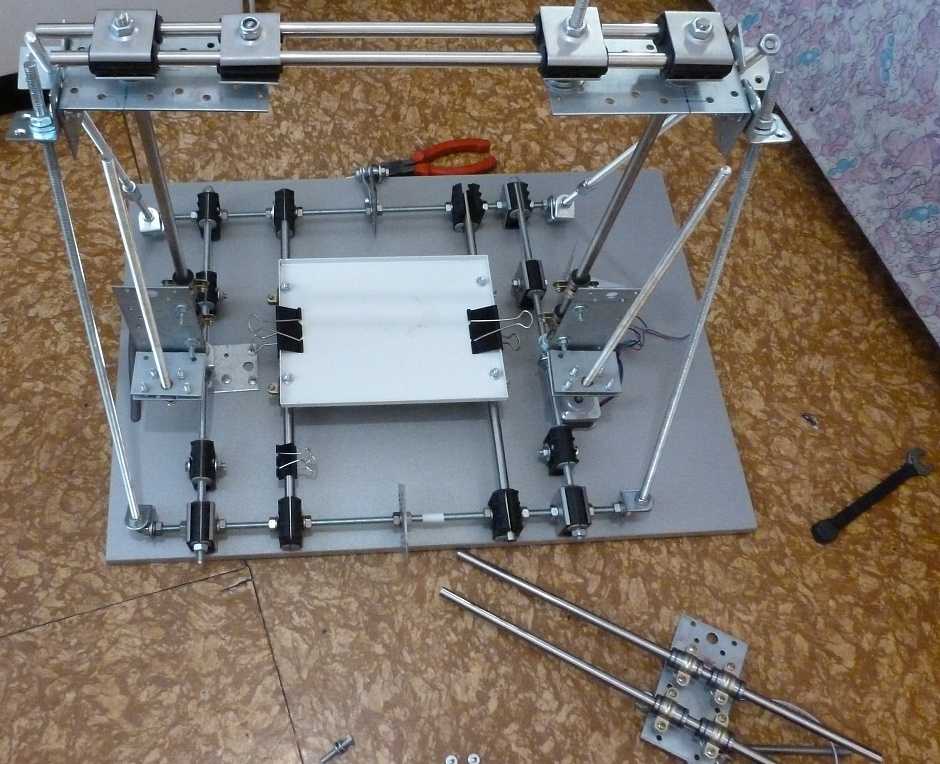
Looking to the future, it is safe to say that 3D printing technology will expand both in breadth and depth, improving technology, speeding up processes, improving quality and improving material properties. 3D printers will increasingly replace old methods in production chains of various scales, and world production, due to this, will move towards the “on demand” scheme of work, increasing the degree of product customization. Perhaps someday, 3D printers will be widely used at the household level for the production of necessary things (the dream and goal of the RepRap movement), but this requires not only the development of technology, but also a paradigm shift in social thinking, as well as the development of a powerful design ecosystem ( 3d modeling) products (which is often forgotten).
3d printing of houses (and other structures) will no doubt also develop, reducing costs and production time, which, together with the development of new approaches in architecture and urban planning (such as modular construction and the prefabricated method), will give a tangible impetus to development the industry as a whole.
Biological 3D printers will be an important tool in scientific research. However, before they appear in hospitals and clinics, where they will print new organs, it is still very, very far away (in fact, this is science fiction).
history of creation and development, who invented and invented when
3D printers appeared in industrial enterprises, educational organizations, became available for home use, ceasing to be exclusive equipment. When and by whom was the 3D printer invented, what 3D printing technologies exist and where are they applied, what is the future of 3D equipment?
The first 3D printer: history of creation
Engineers-inventors from different countries took part in the development of 3D technologies. Chuck Hull, an American developer, is considered a pioneer in the world of 3D printing. He began to create a “installation for stereolithography” in 1984, and a couple of years later he received a patent for it. This made it possible to transfer the project to a commercial footing: in 1988, mass production of 3D printers began.
Interesting! Hull became the first, because he managed to patent his invention. But even before him, the Japanese Hideo Kodama came up with the technology of photopolymer curing of models and tried in May 1980 years to get a patent, later - in 1984 - the French Olivier de Witte, Alain le Meho and Jean-Claude André filed an application for their invention of a stereolithography apparatus. But for one reason or another, neither the first nor the second could patent their own developments.
The printing technology is as follows: a liquid light-sensitive substance - a photopolymer - is laid out in a thin layer and immediately cured under the influence of UV rays, turning into plastic and acquiring a given shape.
In the same year 1988 that Hull's 3D printers hit the market, another American, Steven Scott Crump, proposed a new way of 3D printing - deposition modeling. And the third technique, which was laser sintering of a photopolymer, but not a solution, but a powder, was introduced by Carl Deckard, an engineer from the University of Texas.
All three machines for printing 3D objects became the prototypes of modern printers designed to create three-dimensional models. The first units were not distinguished by high quality and accuracy of printed products, but this was only the first step in breakthrough 3D printing technology.
Help. The term "3D printing" appeared only in 1995, and the name "3D printer" was given to the invented units in 1996.
Evolution in 3D printing
Algorithms for creating a three-dimensional object have been gradually improved. New materials and methods of their processing appeared, printing accuracy increased and the quality of finished products improved. Each of the methods for making 3D models has its own advantages and disadvantages. Different areas of production are suitable for their own technology, and even the earliest of all remains relevant decades after its first announcement.
LOM
LOM (laminated object manufacturing) was invented in 1985 by Mikhailo Feigen. A three-dimensional figure is formed from thin layers of plastic, paper, fabric, and composite materials. The films are cut along the contour with a laser, then the material is heated and joined in layers under pressure.
A three-dimensional figure is formed from thin layers of plastic, paper, fabric, and composite materials. The films are cut along the contour with a laser, then the material is heated and joined in layers under pressure.
Important! The cost of materials for LOM printing is low, this makes it possible to minimize the cost of products. But the price of printers is an order of magnitude higher than, for example, FDM devices, so this technique is not in demand for personal use.
SLS
The abbreviation SLS stands for selective laser sintering. The process is as follows:
- powder or granules are scattered in a thin uniform layer;
- the laser beam sinters the filament in the areas defined by the digital model;
- the next layer is poured and leveled, and the cycle is repeated until a complete object is obtained.
Important ! It is allowed to print several models at the same time in one chamber of the printer.

The filament is polymer powder, ceramic granules, nylon and metal powder.
SGC
SGC (solid ground curing) is a layer-by-layer compaction technique implemented by Cubital engineers (Israel). The printing procedure consists in projecting a template onto a photopolymer layer. The area illuminated by ultraviolet rays hardens, the cavities are filled with wax, and the formation of the next layer begins. Actions are repeated many times, and a three-dimensional detail appears. At the end of the process, the wax melts.
Important! The cost of the equipment is very high, and expensive toxic polymers are applicable as a filament.
The technology received a second name - mask stereolithography.
FDM
Fused deposition modeling can literally be translated as “layer-by-layer fusion”. Most modern 3D printers use this particular technology of printing with thermoplastic materials.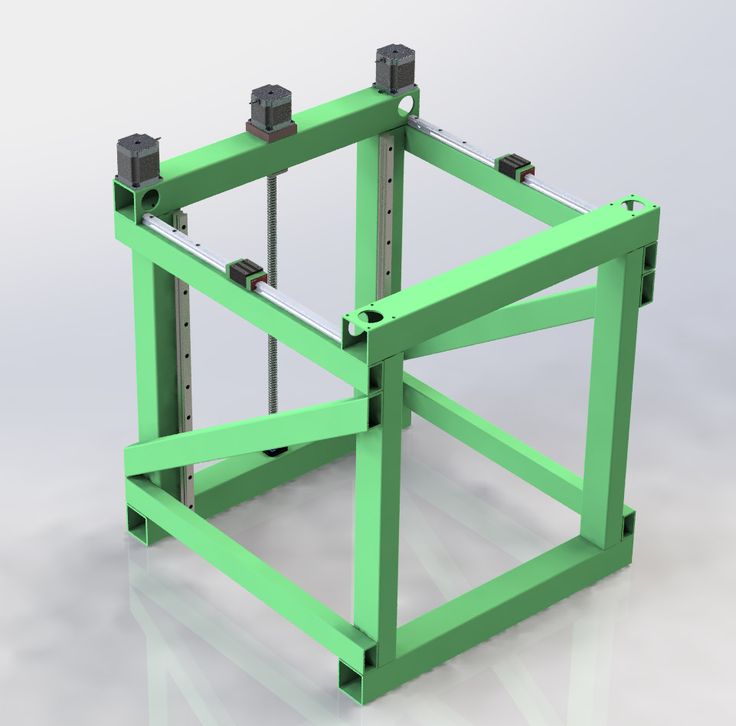 The filament is fed into the extruder, melted and extruded with a thin thread onto the platform, where a three-dimensional model grows layer by layer.
The filament is fed into the extruder, melted and extruded with a thin thread onto the platform, where a three-dimensional model grows layer by layer.
Reference:
- FDM technology prints parts of any complexity;
- The range of thermoplastics allows you to choose the right color and properties for printing;
- formed objects can be processed - sanded, painted, finished on CNC machines and manually.
Affordable cost of printers and filament led to their use for home use.
RepRap
The Replicating Rapid Prototyper - RepRap for short - launched in 2006. His goal is to create a printer capable of reproducing itself. The first copy of the self-replicating apparatus was presented in 2008. He printed about half of his own structural components and mechanisms.
Diagrams, drawings and explanatory documentation are available for download on the Internet.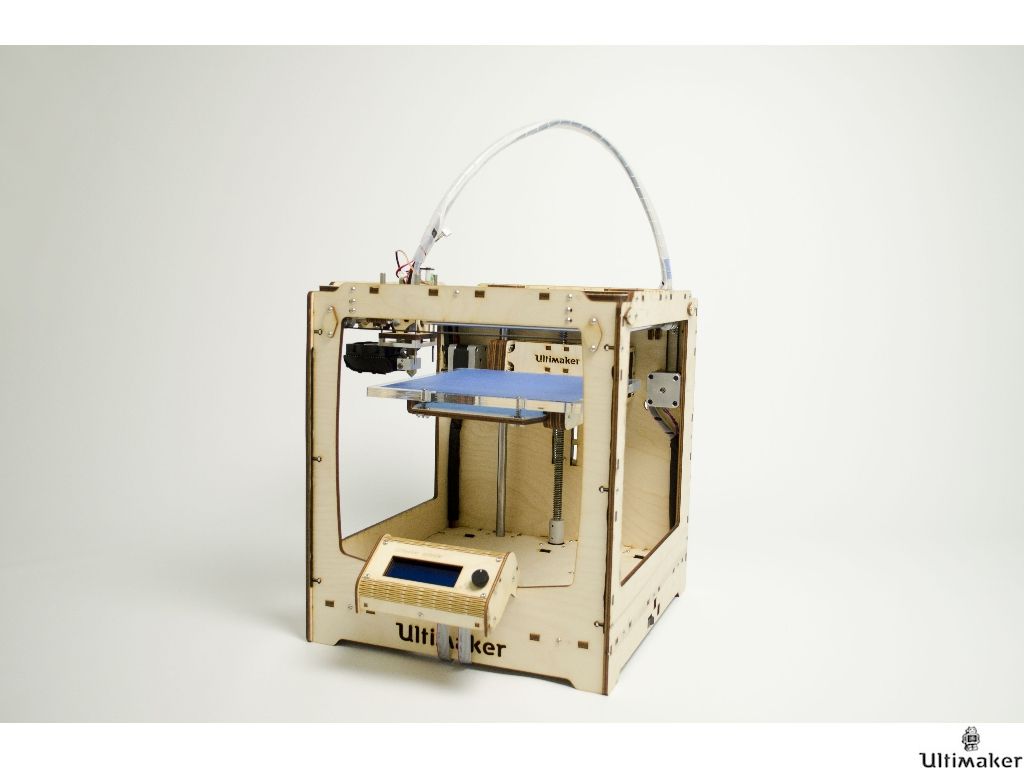 Thanks to RepRap printers and free access to instructions, anyone can set up small-scale production to create 3D models with minimal investment in the purchase of equipment. All costs are in the purchase of plastic.
Thanks to RepRap printers and free access to instructions, anyone can set up small-scale production to create 3D models with minimal investment in the purchase of equipment. All costs are in the purchase of plastic.
The first food printer
The idea to print food was brought to life by scientists at the Massachusetts Institute of Technology. Amit Zoran and Marcello Coelho of Fluid Interfaces Group released a 3D printer that recreates food in 2010. The device was called Cornucopia (from the English. "Cornucopia"). The printing device independently creates mixtures, cools to a predetermined temperature and creates a finished product, which is a dish with the necessary taste, smell and texture and has the required nutritional value.
3D printer in medicine
The seemingly utopian idea to fill the printing device with living cells instead of ink has come true - a bioprinter has been invented. The equipment that came out of the walls of the American University of Wake Forest is designed to recreate human organs from stem cells.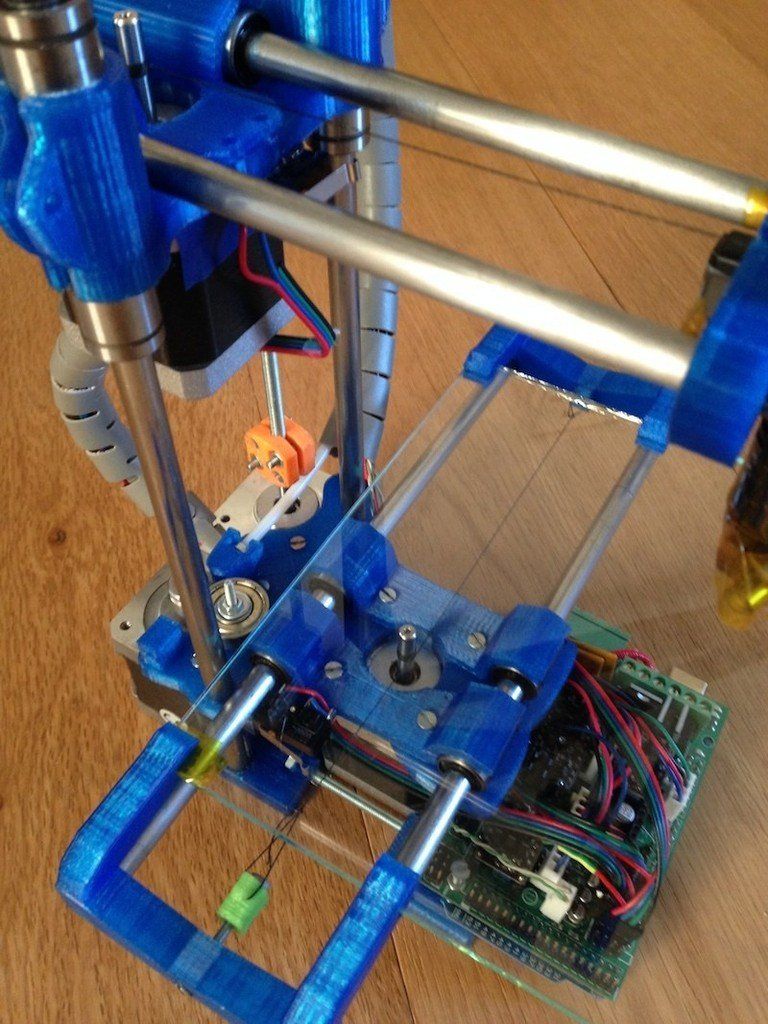
What a bioprinter can print:
- blood vessels;
- leather;
- tissue pieces;
- cartilage;
- whole organs - kidneys, bladder, heart.
Interesting . The bioprinter is used to speed up wound healing. The device, after scanning the damage, prints the tissues filling the wound directly on the patient's body.
The future of 3D printing
3D printing is the technology of the future. Being a real multifunctional and at the same time compact factory, the 3D printer will be used in many areas: construction, medicine, automotive, electronics, food industry, pharmaceuticals.
- Construction . The printed house is no longer considered a miracle. In China, Dubai and European countries, there are already architectural objects printed by huge 3D construction printers using mortar as a filament.
- Medicine .
 The main direction of introduction of printing devices is obtaining organs for transplantation. The formation of blood vessels, skin integuments is successfully practiced in the environment of scientific medical institutions.
The main direction of introduction of printing devices is obtaining organs for transplantation. The formation of blood vessels, skin integuments is successfully practiced in the environment of scientific medical institutions. - Automotive . 3D printing technology is already being used to produce parts. There are prototypes completely created on the printer.
- Food industry . In addition to creating culinary masterpieces, printing devices will be used to produce dishes with desired properties - dietary, with precisely calculated nutritional value. Food for space travelers is also proposed to be printed.
These are just a few of the applications for 3D printing technology. Thanks to the ability to reduce the cost of products by reducing production costs, more and more enterprises will be equipped with printing devices, and in everyday life they will firmly take their place next to traditional inkjet and laser devices.


